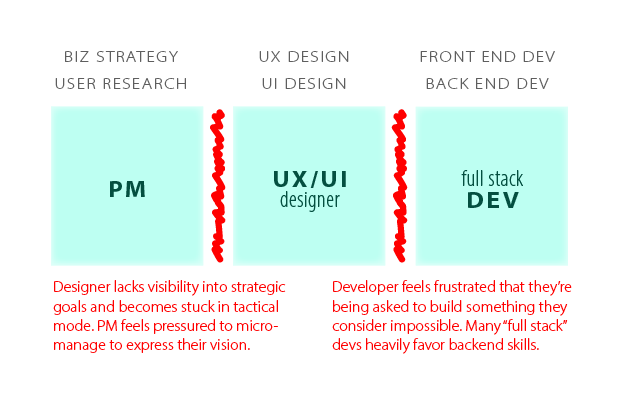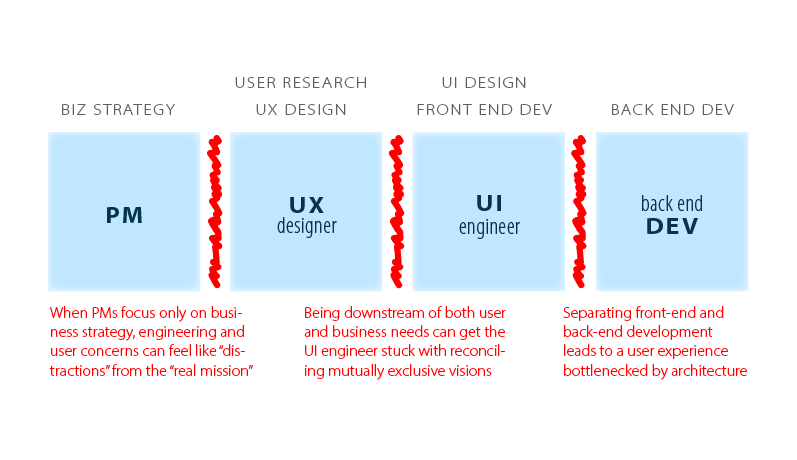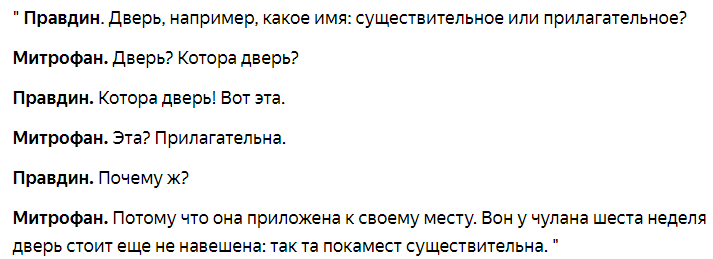
Smaller teams move quicker, but having the correct team composition and mandate is much more important than size. Unless your team has decision authority, you will fall behind again while getting stakeholders caught up to your progress and insights.
Making polished presentation: 3 hours
Presenting findings to execs: 1 hour
Answering follow-up questions: 1 hour
Arguing with the legacy power centers: 8 hours
vs
Having an exec sit in on a user interview: 45 min
Listening to them having their mind blown in the debrief: 15 min
Presenting findings to execs: 1 hour
Answering follow-up questions: 1 hour
Arguing with the legacy power centers: 8 hours
vs
Having an exec sit in on a user interview: 45 min
Listening to them having their mind blown in the debrief: 15 min
When your audience doesn't have the same context you do, it's much harder to explain what's going on and why the problem matters or the solution is correct. Narrowing that gap as much as possible will tighten your feedback loops more than anything else can
https://twitter.com/PavelASamsonov/status/1139589011763290113
This is also why focused teams win over internal agencies, every time. Loaning out a specialist IC to multiple projects not only requires them to switch their context back and forth, but also to juggle multiple sets of meetings! One area of focus leaves more time for actual work.
If you allow one or more busy exec to become the bottleneck to your progress, your team is going to be spinning their wheels while trying to get a meeting scheduled. Focus on winning enough trust early so you can move autonomously.
An easy way to win trust is to induct someone execs trust into the team - not as a "leader", but as an equal participant. Instead of treating them like an exec proxy, train them in basic design methodology and they will be a great teammate and a political asset.
• • •
Missing some Tweet in this thread? You can try to
force a refresh








